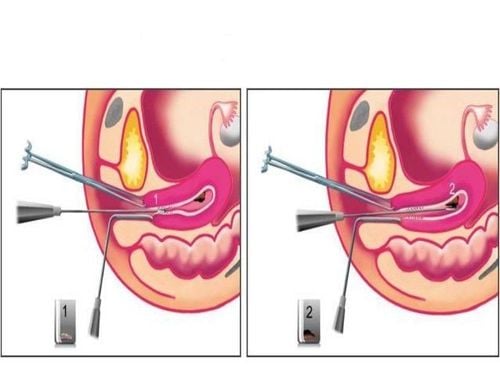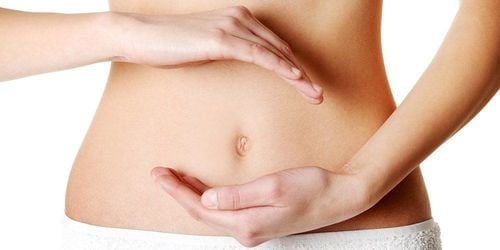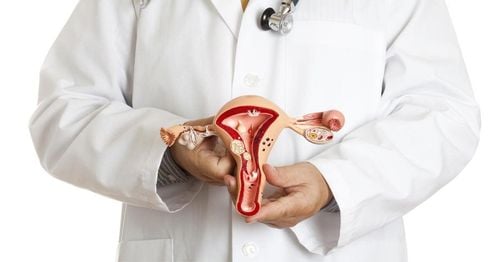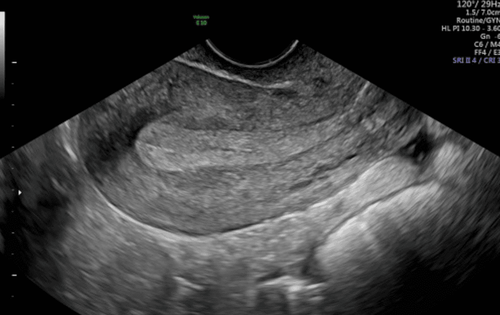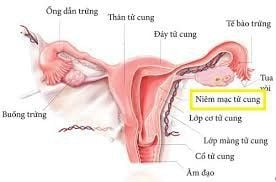This is an automatically translated article.
The article was professionally consulted by Specialist Doctor I Le Thi Phuong - Obstetrician and Gynecologist - Department of Obstetrics and Gynecology - Vinmec Ha Long International HospitalThe thickness of the uterine lining changes with age and menstrual cycle under the influence of female sex hormones. The lining of the uterus thins after menstruation and in postmenopausal women, and thickens in pregnant women and the second half of the menstrual cycle.
1. What is the endometrium?
Endometrial lining, also known as the lining of the uterus, is essentially a cell lining the inside of the uterus, this mucosal structure consists of 2 layers, the endometrial layer and the basal layer:Endometrial layer is class changes with the menstrual cycle. The basal layer does not change with the menstrual cycle. The endometrium plays an important role in determining the conception and implantation of a fertilized egg. The endothelium has a nutritional and protective effect, helping the fetus to develop at its best. The endometrial lining thickens at the end of the menstrual cycle to prepare for the implantation of a fertilized egg. If there is no conception, under the sudden decrease of female sex hormones, the endometrial layer sheds and forms menstruation.

2. How does the endometrium change during the menstrual cycle?
The endometrium changes with the menstrual cycle under the influence of pituitary and ovarian hormones. Endometrial changes can be divided according to the menstrual cycle into 2 phases: the proliferative phase and the secretory phase.Proliferative phase After menstruation, the uterine lining sheds and forms menstruation, at this time the uterine lining is left with only a thin layer about 3-4mm thick. Due to the end of the cycle, the levels of estrogen and progesterone hormones decrease suddenly, causing menstruation and creating a negative feedback reaction on the pituitary gland to secrete hormones that stimulate the ovaries to increase secretion of these 2 hormones. Under the influence of the hormone estrogen, endometrial cells begin to proliferate rapidly. The surface of the uterine lining gradually thickens, and blood vessels also proliferate. By the end of the proliferative phase, the thickness of the uterine lining is about 7-8mm

Secretory phase Under the influence of hormone, the uterine lining continuously increases in the second half of the menstrual cycle, the uterine lining grows to about 8-12mm. Two days before menstruation, due to sudden increase in hormone levels, the uterine lining develops strongly, at this time the thickness of the uterine lining can be about 12-16mm thick. After that, if there is no conception, the hormones estrogen and progesterone drop suddenly, causing the uterine blood vessels to constrict the unnourished uterine lining, which should shed and form menstruation. The lining of the uterus continues to proliferate according to the above cycle.
3. Endometrial abnormalities
Normally, the lining of the uterus is about 7-8mm thick, 3-4mm after menstruation, and about 8-15mm thickest between and at the end of the menstrual cycle. From the normal indicators that change with the menstrual cycle, it is possible to determine whether the uterine lining is thick or the lining of the uterus is thin.Thin endometrium or thin endometrium Is when the lining is less than 6mm thick and not during menstruation. When the uterine lining is thin, conception becomes difficult because the embryo cannot attach to the uterine cavity to implant. In some cases, the lining of the uterus is thin, the fertilized egg can still implant and form a fetus, but because it is too thin, the lining is not able to provide enough nutrients to nourish the developing fetus. . So it will also affect the development of the fetus, the fetus is difficult to develop or may lead to miscarriage, stillbirth.
Some causes can cause thin endometrium such as: Low estrogen levels in the body; Due to diseases related to the uterus such as tumors, infections...; Multiple abortions; Due to complications after procedures or surgery in the uterus leading to adhesions with the uterine lining...

Thick endometrium or thick endometrium is when the lining of the uterus is more than 20mm thick. For women with such endometrial hyperplasia, menorrhagia, secondary amenorrhea, and ovulation disorder often occur. In this case, the ability to conceive is difficult because the thick lining prevents sperm from meeting the egg.
Causes of thickened endometrium include: It is mainly caused by a hormonal imbalance in the body's estrogen hormone, which is higher than that of progesterone, leading to proliferation of the uterine lining; Having polycystic ovary disease; Due to the continuous use of estrogen-containing drugs without progesterone.
Each time in the menstrual cycle, the thickness of the lining of the uterus is different, so when ultrasound of the uterus at different times, the thickness of the endometrium is not the same. However, in some cases, the endometrium is too thin or too thick, which affects fertility, so you should go to a specialist facility for examination and advice.
Please dial HOTLINE for more information or register for an appointment HERE. Download MyVinmec app to make appointments faster and to manage your bookings easily.





